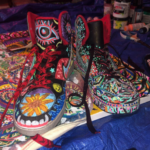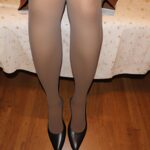A Practical Guide to Fashion Styles: From Classic to Streetwear and Beyond

Overview: The Major Fashion Styles You Can Build Into Your Wardrobe
Fashion styles are broad aesthetics that guide how you select silhouettes, fabrics, colors, and accessories to express identity. While trends evolve each season, core style families-such as classic, minimalist, streetwear, bohemian, preppy, romantic, avant‑garde, utilitarian, and corporate‑inspired tailoring-remain the foundation for building a wardrobe. Industry coverage shows recurring themes like soft power tailoring and office‑ready looks alongside expressive, individual aesthetics, signaling that personal identity and versatility are central to modern style [1] . Cultural cycles also revive past decades (’60s mod, ’70s boho, ’90s grunge), especially among younger consumers who value authenticity and sustainability, creating a mix-and-match approach to aesthetics [2] .
1) Classic (Timeless) Style
What it is: Polished, seasonless dressing built on clean lines, neutral palettes, and enduring staples (e.g., trench coats, button-downs, pencil skirts, loafers). It aligns with current runway emphasis on refined tailoring that projects confidence without harsh edges, reflecting the broader “soft power” mood [1] .
How to build it (steps): Start with a neutral base capsule (white oxford, navy blazer, camel trench, mid-wash straight jeans). Prioritize fit via alterations. Add a structured handbag and simple jewelry.
Example: A slouchy trench over a silk blouse, straight trousers, and pumps. This merges authority with comfort, echoing contemporary officewear evolution [1] .
Challenges and solutions: Risk of looking plain-solve by mixing textures (silk with wool), subtle color accents, or a modern shoe.
2) Minimalist Style
What it is: Streamlined silhouettes, restrained color stories (black, white, taupe), and high-quality fabrics. Its overlap with modern office dressing makes it adaptable to work and weekend [1] .
How to build it: Choose modular pieces: a column dress, tailored trousers, fine-knit sweaters, and sleek sneakers. Keep accessories sculptural but sparse.
Example: Monochrome column knit with a longline blazer and minimalist mules.
Challenges and solutions: Can feel austere-add warmth with cream or cocoa tones and soft tailoring.
3) Streetwear Style
What it is: Casual, urban-driven looks centered on sneakers, hoodies, graphic tees, relaxed denim, and sportswear. Streetwear often fuses nostalgia (e.g., ’90s shapes) with modern branding, reflecting youth culture’s remix of eras [2] .
How to build it: Anchor with a standout sneaker, then layer hoodies or varsity jackets over tees and relaxed cargos or straight-leg jeans. Balance volume: oversized top with straighter bottoms.
Example: Retro runner sneakers, graphic tee, bomber jacket, and carpenter jeans-nods to revived retro aesthetics [2] .

Source: allforfashiondesign.com
Challenges and solutions: Over-branding can date fast-opt for timeless colorways and heritage silhouettes for longevity.
4) Bohemian (Boho) Style
What it is: Free-spirited, craft-forward dressing featuring flowing silhouettes, earth tones, embroidery, lace, crochet, and vintage references. The continued revival of retro and artisanal details supports boho’s staying power [2] .
How to build it: Start with a floaty maxi dress, add a crochet layer, leather belt, and slouchy boots or sandals. Incorporate natural fibers like linen and cotton.
Example: Tiered midi skirt, lace-trim camisole, and woven bag-using lace as a subtle trend accent is a low-risk way to participate while keeping pieces wearable long-term [4] .
Challenges and solutions: Risk of looking costume-like-dial back with one statement piece at a time and neutral accessories.
5) Preppy Style
What it is: Collegiate and country-club cues-polo shirts, cable knits, pleated skirts, loafers, and blazers. Preppy intersects with today’s office-ready looks and can be softened via relaxed fits [1] .
How to build it: Combine a navy blazer with a striped oxford, pleated skirt or chinos, and penny loafers. Add a silk scarf for polish.
Example: Cable knit over the shoulders with a button-down and straight chinos for a modern, unfussy take.
Challenges and solutions: Can feel rigid-introduce softer trenches or slouchier tailoring to modernize [1] .
6) Romantic Style
What it is: Femininity-forward details: ruffles, lace, florals, delicate trims, and soft color palettes. Seasonal guides show lace as a wearable accent that can be integrated without overwhelming outfits [4] .
How to build it: Select a lace-trim camisole, floral skirt, or puff-sleeve blouse. Keep accessories refined: pearl studs, dainty chains, low heels.
Example: Soft puff-sleeve midi with barely-there sandals and a small structured bag.
Challenges and solutions: Too sweet for some settings-temper with a sharp blazer or leather jacket for contrast.
7) Avant‑Garde Style
What it is: Experimental silhouettes, architectural shapes, and unexpected proportions. While niche, its influence appears when mainstream tailoring embraces exaggerated shoulders or sculptural coats, aligned with runway creativity and individuality [1] .
How to build it: Start small: an asymmetrical skirt, sculptural belt, or artful footwear. Stick to a cohesive palette so shapes stand out without chaos.
Example: All-black look with a structured origami skirt and geometric earrings.
Challenges and solutions: Wearability-introduce one statement piece per outfit and ground it with simple basics.
8) Utilitarian/Workwear Style
What it is: Practical garments-cargo pants, field jackets, denim chore coats-often merged with streetwear. Youth trends frequently remix utility with retro influences for daily wear [2] .
How to build it: Choose durable fabrics (canvas, denim), neutral tones, and roomy pockets. Pair with clean sneakers or rugged boots.
Example: Olive cargo trousers, cream tee, denim overshirt, and gum-sole sneakers.
Challenges and solutions: Can skew boxy-balance with a tapered leg or a fitted top to refine proportions.
9) Corporate-Inspired (Soft Power) Tailoring
What it is: Office-coded separates reimagined with ease: slouchy trenches, softened blazers, pencil or A-line skirts, and pumps-projecting influence without stiffness. This theme is a noted runway direction for 2025 [1] .
How to build it: Pick one refined hero (e.g., trench or blazer), then add knit tops, mid-heel pumps, and structured bags. Favor breathable wool blends and drapey twills.
Example: Relaxed blazer, knit tank, fluid trousers, and modern peep-toe shoes mentioned among key accessories for the season [1] .
Challenges and solutions: Risk of feeling too formal-introduce soft knits and flexible soles for comfort.
How to Identify Your Primary Style (Step-by-Step)
- Audit your closet: Lay out 10 most-worn pieces. Note recurring colors, fabrics, and fits.
- Pick a base style: Match your frequent items to one of the styles above (e.g., lots of blazers → classic/corporate; graphic tees → streetwear).
- Select two supporting styles: Many people blend (e.g., minimalist + romantic accents), a practice consistent with modern individualistic dressing [2] .
- Create a 10-item capsule: Build interoperable outfits around that base (tops, bottoms, layers, shoes).
- Test and iterate: Wear the capsule for two weeks. Replace any piece you avoid with a better fit or fabric.
Budgeting, Sourcing, and Sustainability
Budget focus: Invest in high-impact items (outerwear, footwear) for classic or corporate styles; save on trend-led accents (lace camisoles, statement belts) suggested as easy, wearable entry points [4] . For streetwear or utilitarian aesthetics, prioritize durable fabrics for cost-per-wear value [2] .
Sourcing tips: You can explore secondhand and vintage to access revived decades (’60s-’90s) and reduce cost and waste; younger consumers often favor such authenticity and sustainability considerations [2] .
Care and longevity: Alter tailoring for perfect fit and follow fabric-specific care to maintain structure and drape-key to minimalist and classic wardrobes [1] .
Adapting Styles to Occasions
Work: Lean classic or corporate-inspired, using softened structures and refined accessories that align with 2025’s “soft power” direction [1] .
Weekend: Streetwear and utilitarian looks deliver comfort and personality, especially when remixing retro influences popular with younger audiences [2] .
Evening: Romantic or minimalist options transition well-add lace or sculptural pieces as spotlight elements without overcommitting to short-lived trends [4] .
Keeping Current Without Overhauling Your Closet
Micro-updates: Introduce one accessory that aligns with current runway moods-such as modern peep-toe shoes or a slouchy trench-so outfits feel current with minimal changes [1] .
Retro refresh: Rotate in a decade piece (e.g., ’90s denim) in line with ongoing nostalgia cycles and Gen Z’s eclectic approach to dressing [2] .
Selective trend testing: If unsure about a trend like lace, try it as trim or a camisole under knits, a strategy recommended for maintaining wearability [4] .
Key Takeaways
– Classic, minimalist, streetwear, bohemian, preppy, romantic, avant‑garde, utilitarian, and corporate-inspired tailoring are the core fashion styles most people draw from.
– Runway reporting points to softened office dressing and refined accessories as prominent directions, making polished yet comfortable wardrobes highly relevant [1] .
– Youth culture mixes decades and values authenticity and sustainability, which supports eclectic, personal style-building and secondhand sourcing [2] .
References
[1] Who What Wear (2025). The Biggest Spring/Summer 2025 Runway Fashion Trends.
[2] Printful (2025 update). Gen Z Fashion: 14 Fashion Trends in 2025.
[3] YouTube (2025). What’s IN and What’s OUT for Summer! 2025 Fashion Trends.

Source: exploretrending.com






